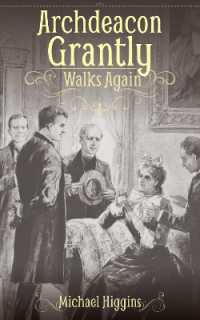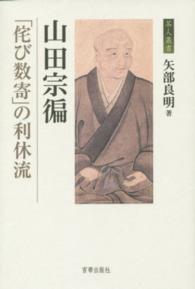- ホーム
- > 洋書
- > 英文書
- > History / World
Full Description
The book outlines how class is single most important factor in understanding the British army in the period of industrialisation. It challenges the 'ruffians officered by gentlemen' theory of most military histories and demonstrates how service in the ranks was not confined to 'the scum of the earth' but included a cross section of 'respectable' working class men.
Common soldiers represent a huge unstudied occupational group. They worked as artisans, servants and dealers, displaying pre-enlistment working class attitudes and evidencing low level class conflict in numerous ways. Soldiers continued as members of the working class after discharge, with military service forming one phase of their careers and overall life experience.
After training, most common soldiers had time on their hands and were allowed to work at a wide variety of jobs, analysed here for the first time. Many serving soldiers continued to work as regimental tradesmen, or skilled artificers. Others worked as officers' servants or were allowed to run small businesses, providing goods and services to their comrades. Some, especially the Non Commissioned Officers who actually ran the army, forged extraordinary careers which surpassed any opportunities in civilian life.
All the soldiers studied retained much of their working class way of life. This was evidenced in a contract culture similar to that of the civilian trade unions. Within disciplined boundaries, army life resulted in all sorts of low level class conflict. The book explores these by covering drinking, desertion, feigned illness, self harm, strikes and go-slows. It further describes mutinies, back chat, looting, fraternisation, foreign service, suicide and even the shooting of unpopular officers.
Contents
AbbreviationsNotesList of illustrationsPrefaceChapter 1 IntroductionChapter 2 Class structure and the British armyChapter 3 Soldiers as workersChapter 4 Class conflict in the armyChapter 5 ConclusionBibliographyIndex








